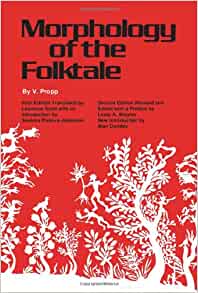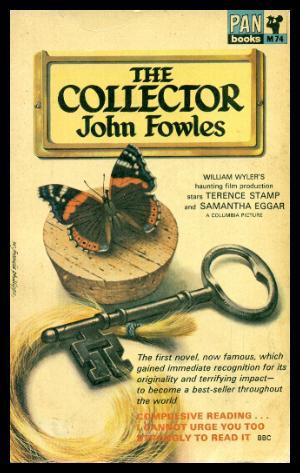Copyright 2019 by Gary L. Pullman
A common formula for many
horror stories, whether written on the page or enacted on the
soundstage, consists of five acts:
The status quo is
portrayed.
A series of bizarre
incidents occur.
The protagonist
discovers the cause of these incidents.
The protagonist,
often aided by friends, uses his or her knowledge of the cause of
the incidents to put things right.
A return to the
status quo is shown (although the ending may also hint at a possible
sequel).
As in describing a scene
in order both to represent and to dramatize it, it can be helpful to
draw inspiration from a horror movie poster (the book cover, as it
were, of a film), this same process can be useful in generating
scenes which comprise the bizarre incidents which occur in act two
(and, perhaps, later as well). Remember that the scenes so created
must be causally related, although their ultimate cause will be
withheld until act three.
An inspiration for a scene
might be the poster for Annabelle: Creation (2017). (In
writing from movie posters, I usually select posters for movies I
haven't seen, and I don't read a synopsis of the film. I want to be
inspired by the poster's art; I don't want to steal the
screenwriters' original treatment.) With this in mind, let's look at
the way NOT to do this:
My
senses on high alert, I stole glances to either side and over my
shoulder, as I crept along the cold, damp corridor, feeling trapped
by the ancient basement's gray stone walls, stone floor, and stone
ceiling.
I was
conscious of the tons of massive rock above me and of the cataclysm
which would ensue should all that weight come tumbling down (not that
it should), and I imagined the terrors that likely befell the
poor lost souls shut away inside the subterranean chambers which
opened off the warren of intersecting hallways—or would have
opened, had they not been locked.
As I
continued along the maze, I heard the grating of rusty hinges, as a
great, thick iron door opened of its own accord. Its loud,
high-pitched creaking noise made my heart shrink, even as I turned,
staring with horror at the sight within the chamber thus revealed.
A
girl stood, her arms raised and extended at shoulder level; her body
limp; her legs, one of which wore a brace, together. She was pale,
and her eyes were closed. Perhaps she was not standing, after all.
She seemed to have recently died—after having been crucified.
However, no nails had been driven through her wrists or ankles.
A
chill of horror iced my spine, as I saw another disturbing anomaly: a
doll seemed to float before her, positioned as though it were seated
upon the girl's lap, although, of course, her hanging vertically from
the wall precluded such a possibility. The doll must be pinned
to the girl's dress.
But
why would someone go to such trouble? The scene seemed some sort of
bizarre tableau, but, if so, to what end? Or did it have
a purpose? Perhaps the hole mise-en-scene was nothing more
than the whim of a mind gone mad.
Run!
For God's sake, flee this damned place!
At my peril, in my foolishness, my curiosity greater
than my wisdom, I stayed, gazing at the figure of torment within the
chamber to which the open door admitted my horrified gaze.
At the girl's feet, a small table had been overturned. I
squinted, focusing my gaze, and drew back, horrified anew: the table,
like the chair beside it, the doll, and, indeed, the girl herself
floated! Suspended in midair, they were held stationary and aloft by
a power both unseen and unknown.
The girl wore patent-leather shoes, which were all but
invisible in the darkness of what, I realized now, was a window—or
a long, narrow rectangular opening, without glass, within the
chamber's wall, behind the female figure, unlit and indistinct. Its
shape had added to the illusion that the girl had been crucified,
for, in the dim light, it looked like a plank of wood to which her
ankles might have been nailed, as her wrists, at first, had seemed to
be fixed to the stone wall.
Aghast, I stumbled away from the open doorway, realizing
my retreat only when my back encountered the immovable resistance of
the corridor's opposite wall. As I continued to stare at the girl
afloat against her chamber's wall, her eyes opened, revealing yet
another horror: the whites were blood-red, her pupils elliptical and
golden, as if ablaze with the fire of hell, an effect strengthened by
the appearance, between her soft, pink lips of a split serpent's
tongue!
The
doll, the countenance of which was of a decidedly malevolent
character, opened its mouth, and, in a voice more suitable to a demon
than to a toy in the shape of a babe in arms, harshly croaked a plea
both pathetic and horrendous: Help us!
Turning,
I ran along the stony floor, the doll's croaking supplication seeming
to reverberate throughout the underground hallways and subterranean
chambers as if the labyrinth were the many mouths and throats of
hell's damned souls crying in unison, Help us!
This
description is too close to the picture on the poster to be used in a
story of one's own, but, in writing it, I conceived an idea for a
novel, or part of one, so the effort isn't necessarily lost, even
though it didn't achieved its intended goal, which was to develop a
scene that is inspired by, rather than merely repeats, a scene
painted for a movie poster. It would be a mistake—and a
significant, perhaps costly, one—to use the description I wrote of
the Annabelle: Creation poster's picture in a story of my own;
it is too close to the scene depicted by the poster and could,
therefore, represent plagiarized content were it to be used as is in
an independent work.
However,
all may not be lost, even now, in this exercise.
Returning
to my description (and to the poster), I can isolate the elements
that are horrific and uncanny and repeat them in a new
description that is sufficiently different to avoid copying the
Annabelle: Creation artwork. So what are the poster's
elements of horror and the uncanny? As I see them:
isolation
innocence
mocked through parody
religious
faith mocked through parody
victimization
perversions
of the Christian concepts of the crucifixion and the creation
confusion
created by a maze of underground corridors and chambers
supernatural
power displayed
With
these elements in mind, a rewrite of the original description can
perhaps salvage the scene, allowing it to be used in a work of one's
own:
My
senses on high alert, I stole glances to either side and over my
shoulder, as I crept along the cold, damp corridor, feeling trapped
by the ancient basement's gray stone walls, stone floor, and stone
ceiling.
I was
conscious of the tons of massive rock above me and of the cataclysm
which would ensue should all that weight come tumbling down (not that
it should), and I imagined the terrors that likely befell the
poor lost souls shut away inside the subterranean chambers which
opened off the warren of intersecting hallways—or would have
opened, had they not been locked.
As I
continued along the maze, I heard the grating of rusty hinges, as a
great, thick iron door opened of its own accord. Its loud,
high-pitched creaking noise made my heart shrink, even as I turned,
staring with horror at the sight within the chamber thus revealed.
A boy
lay upon an elevated stone slab inside a room resembling a tomb cut
from a rock. He was naked but for a cloth laid over his groin. His
arms were extended straight out, from his shoulders; his body was
limp, his legs together. He was pale, and his eyes were closed. He
seemed to have recently died—after having been crucified. Wounds
from spikes driven through his wrists and ankles were crusted with
the blood staining the altar upon which the body lay.
What
had I stumbled upon? The result of the crucifixion of a child? What
recent madness had happened here, in the bowels of a castle thought
long deserted? Were the villains who'd committed this blasphemous
murder still in secret residence? Was I being watched by the madmen
who'd committed this unspeakable sacrilege?
Run!
For God's sake, flee this damned place!
At my peril, in my foolishness, my curiosity greater
than my wisdom, I stayed, gazing at the figure of torment within the
chamber to which the open door had admitted my horrified gaze, until,
aghast in contemplating the sight, I stumbled away from the open
doorway, realizing my retreat had been underway only when my back
encountered the immovable resistance of the corridor's opposite wall.
Now, as I continued to stare at the unfortunate boy, his
eyes opened, revealing yet another horror: the whites were blood-red,
his pupils elliptical and golden, as if ablaze with the fire of hell,
an effect strengthened by the appearance, between his soft, pink
lips, of a split serpent's tongue!
The
features of his handsome face distorted, as a malevolent hatred akin
to rage animated the corpse, its mouth opening as a voice more
suitable to a demon than to a child, harshly croaked a plea both
pathetic and horrendous: Help us!
Turning,
I ran, finally, in headlong flight, along the stony floor, the
demon-child's croaking supplication seeming to reverberate throughout
the underground hallways and subterranean chambers, as if the
labyrinth were the many mouths and throats of hell's damned souls,
crying in unison, Help us! although,
in their infernal state, neither deliverance nor succor was possible.
All that was left them was this tableau of the damned, by which they
not only tormented the living, but also continued their unholy
protests against the Almighty whom, even in thethroes of their
eternal torment, to curse and vilify.
This
second description, inspired by the poster and by the unsuccessful
attempt to capture in words, while avoiding copying, which would
result, if included, as originally written, in my own, otherwise
original work, in plagiarism, now works, for it is different enough
to be my own, a work inspired by, rather than merely copied from, the
original poster. It is itself original, instead of simply derivative.
















